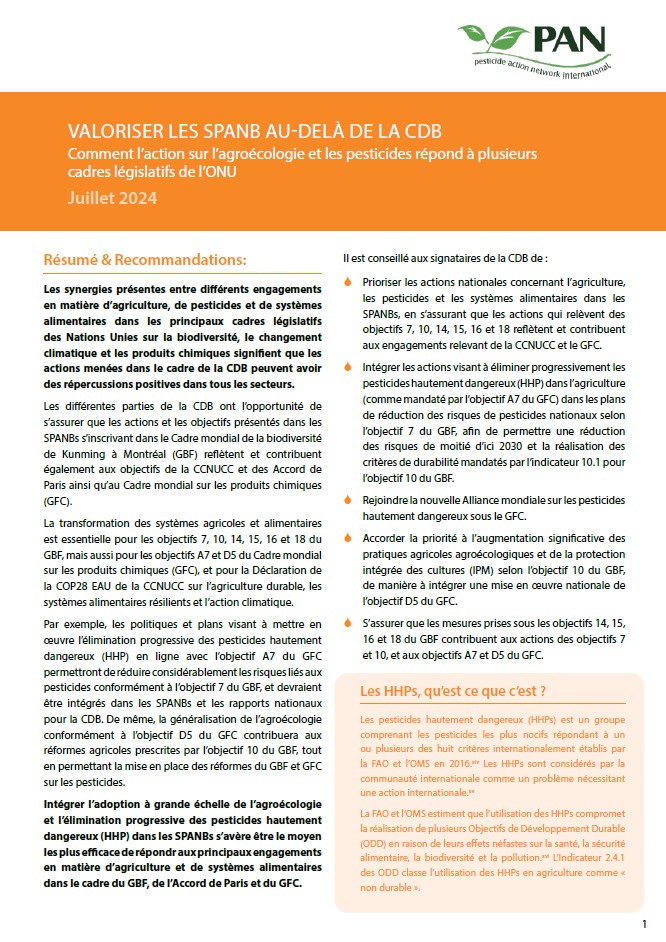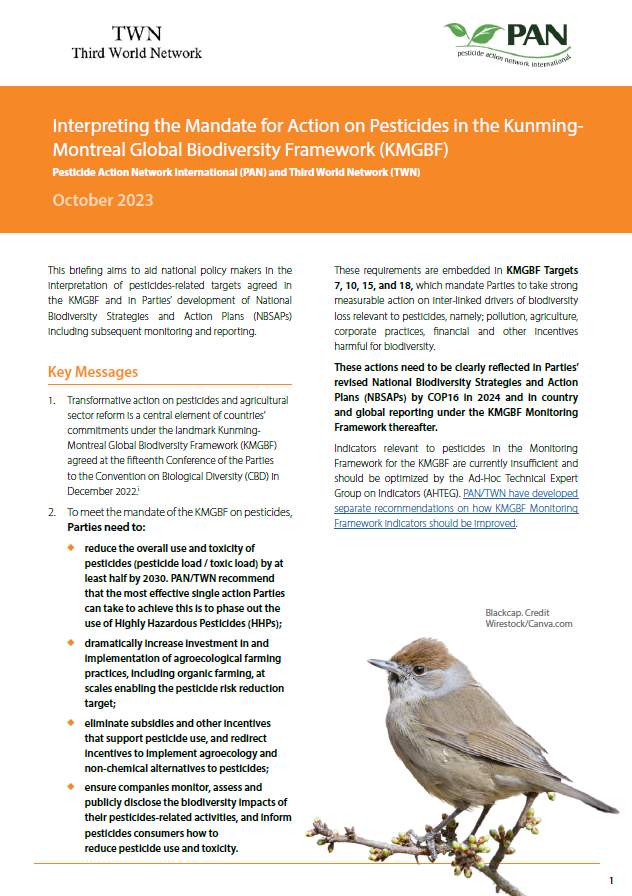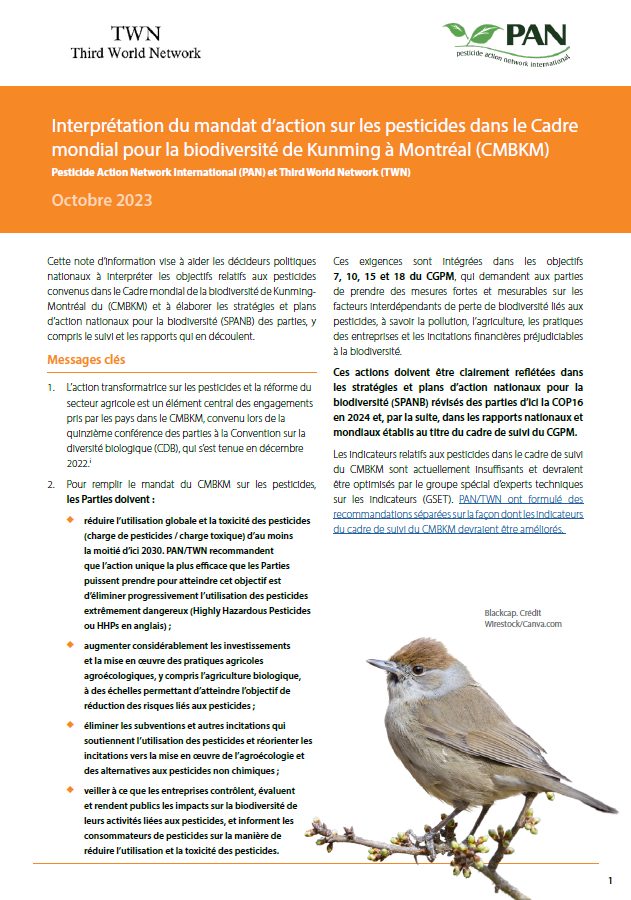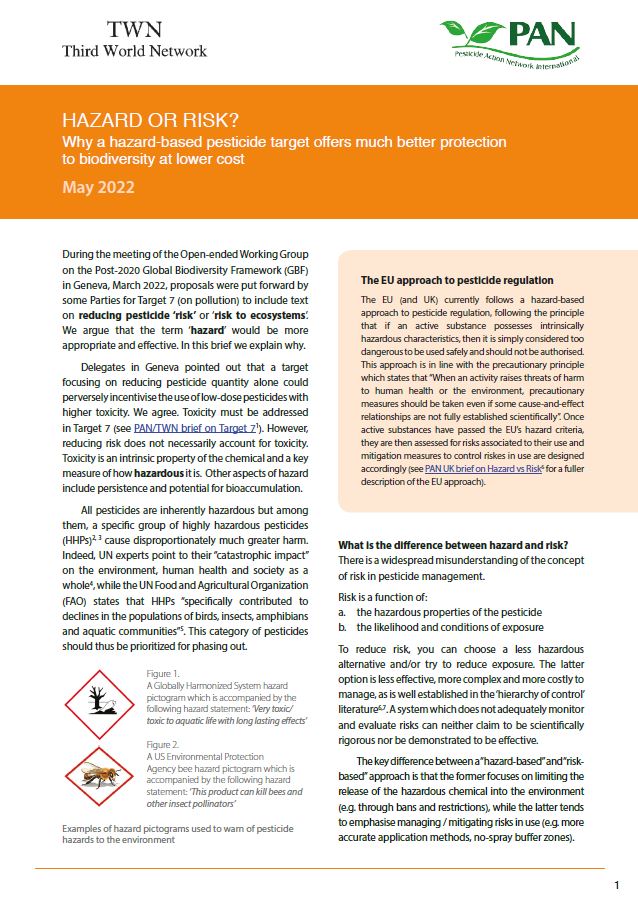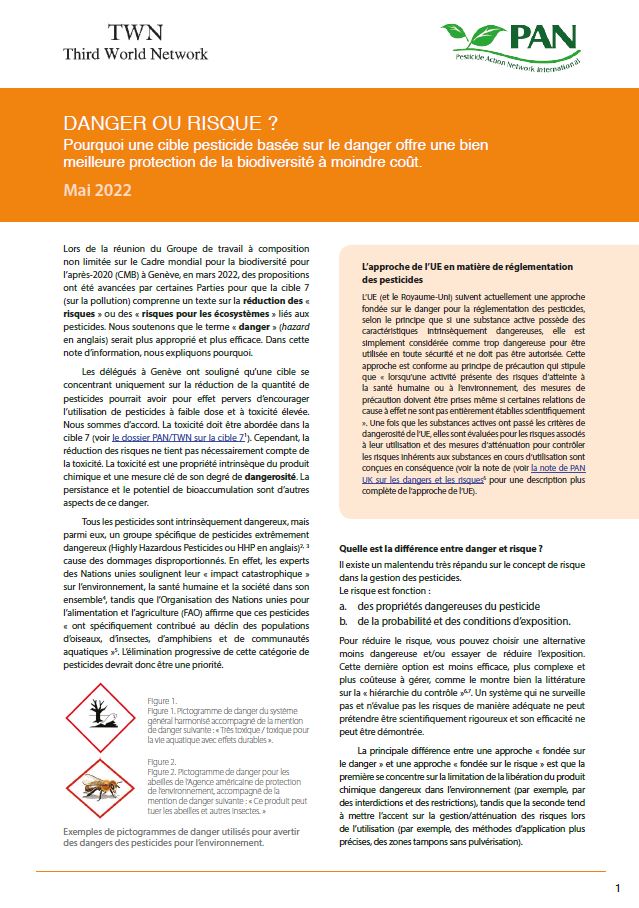Conserving biodiversity
The global rate of species extinction is unprecedented and the absolute abundance of wild organisms has decreased by half over the past 50 years. This catastrophe threatens the very basis of food production and sustainable development globally.
PAN UK works to counter this trend within the United Nations Convention on Biological Diversity (CBD), and in 2022 helped inform and secure new global targets within the Kunming-Montreal Global Biodiversity Framework (GBF). This included commitments for an at least half reduction in the risks to biodiversity from pesticides and significantly increased support for sustainable agricultural practices, including agroecology.
PAN UK advises Parties to the CBD, the CBD Secretariat, and other relevant UN agencies, on appropriate scientific indicators for measuring progress on these commitments. We also provide guidance on how countries should integrate these commitments into national biodiversity strategies and action plans for the CBD, and relevant action plans for climate change and pollution prevention under other critical UN environmental agreements.
Leveraging NBSAPS beyond the CBD
PAN highlights how action to support agroecology and phase out Highly Hazardous Pesticides (HHPs) in agriculture delivers on multiple commitments across three UN policy frameworks. These include targets 7 and 10 of the Kunming-Montreal Global Biodiversity Framework (GBF) of the CBD, targets A7 and D5 of the Global Framework on Chemicals (GFC), and the COP28 UAE Declaration on Sustainable Agriculture of the UN Framework Convention on Climate Change (UNFCCC). The paper outlines why integrating action on HHPs and agroecology into National Biodiversity Strategies and Action Plans (NBSAPs) for the CBD during 2024 and 2025 is the first step countries can take in building food system transformation into their response to the triple-planetary-crises of climate change, biodiversity loss and pollution.
Interpreting the Mandate for Action on Pesticides in the Kunming-Montreal Global Biodiversity Framework (KMGBF)
Transformative action on pesticides and agricultural sector reform is a central element of countries’ commitments under the landmark Kunming-Montreal Global Biodiversity Framework (KMGBF) agreed at the fifteenth Conference of the Parties to the Convention on Biological Diversity (CBD) in December 2022. The following briefing aids national policy makers in the interpretation of pesticides-related targets agreed in the KMGBF and in Parties’ development of National Biodiversity Strategies and Action Plans (NBSAPs) including subsequent monitoring and reporting.
Optimizing the Monitoring Framework Indicators for Pesticides in the Kunming-Montreal Global Biodiversity Framework (KMGBF)
Indicators for monitoring progress against KMGBF Targets relevant to pesticides, including Targets 7, 10, 15, 18, were adopted at CBD COP15 in Montreal in 2022. However, these are currently insufficient, and a review process has been established, with a view to further consideration at COP16 in 2024. We provide an analysis of these indicators in the briefing below.
Target to cut global pesticide use by two-thirds urgently needed to halt biodiversity loss
In June 2022, parties to the Convention on Biological Diversity (CBD) will meet in Nairobi to negotiate goals and targets to reverse biodiversity loss in the decade post-2020. These will be incorporated into the Post-2020 Global Biodiversity Framework (GBF), which is expected to be forwarded to the Conference of the Parties (COP-15) for further negotiation and adoption later in 2022 in Kunming, China. The first draft of the GBF includes a target to cut global pesticide use by two-thirds by 2030.
Working with Third World Network (TWN), PAN has produced a new briefing outlining why tackling pesticides is essential to protecting biodiversity. In addition, to have a realistic chance at reducing the decline in biodiversity caused by pesticides, the GBF needs to:
- include measurable targets to reduce synthetic pesticide use and toxicity by at least two-thirds
- phase out highly hazardous pesticides (HHPs), which are highly detrimental to biodiversity
- support farmers to transition away from a reliance on synthetic pesticide use through the use of agroecological approaches
The full briefing is available below in English, Spanish and French.
Hazard or risk? Why a hazard-based pesticide target offers much better protection to biodiversity at lower cost
During the meeting on the Post-2020 Global Biodiversity Framework (GBF) in Geneva in March 2022, proposals were put forward by some Parties for Target 7 (on pollution) to include text on reducing pesticide ‘risk’ or ‘risk to ecosystems’. We argue that the term ‘hazard’ would be more appropriate and effective. We explain why in the briefing below (available in English, Spanish and French).
Updated text proposals on pesticides for Target 7
The second phase of COP-15 will be held in Montreal from 7 to 19 December 2022 during which it is anticipated that the final decision on the GBF will be taken. We provide an analysis of the latest proposals for Target 7 in the briefing below (available in English, Spanish and French).


